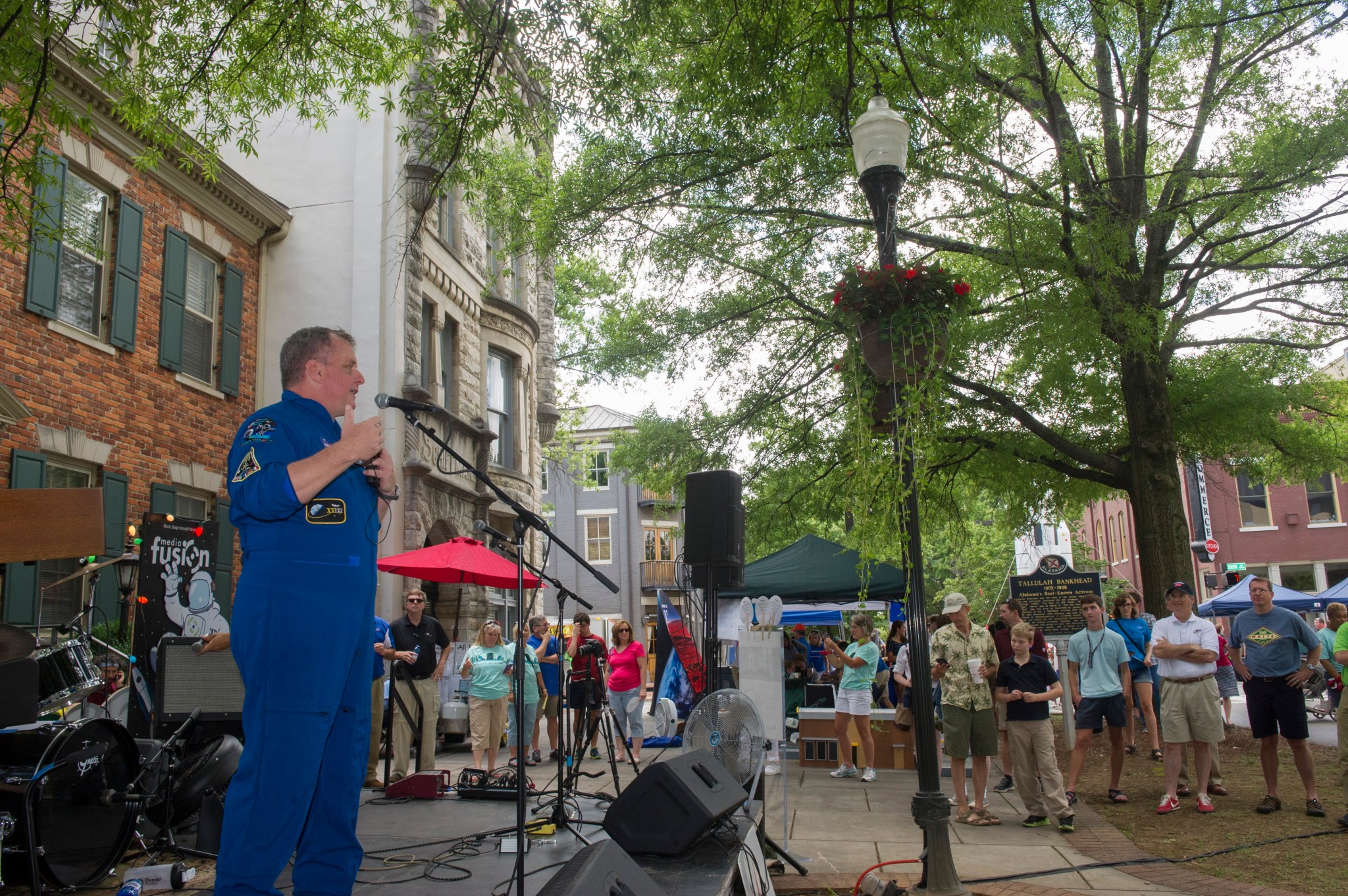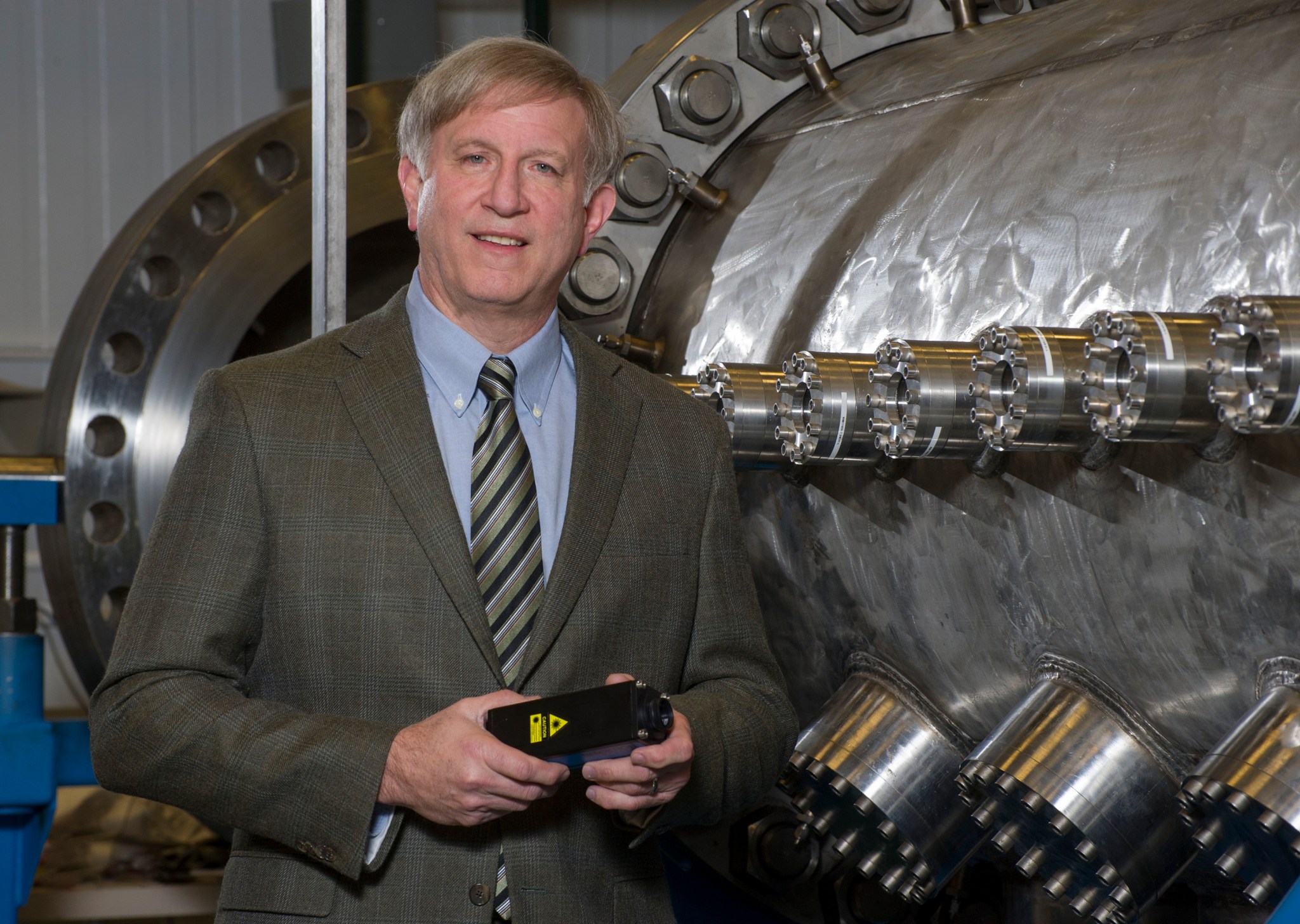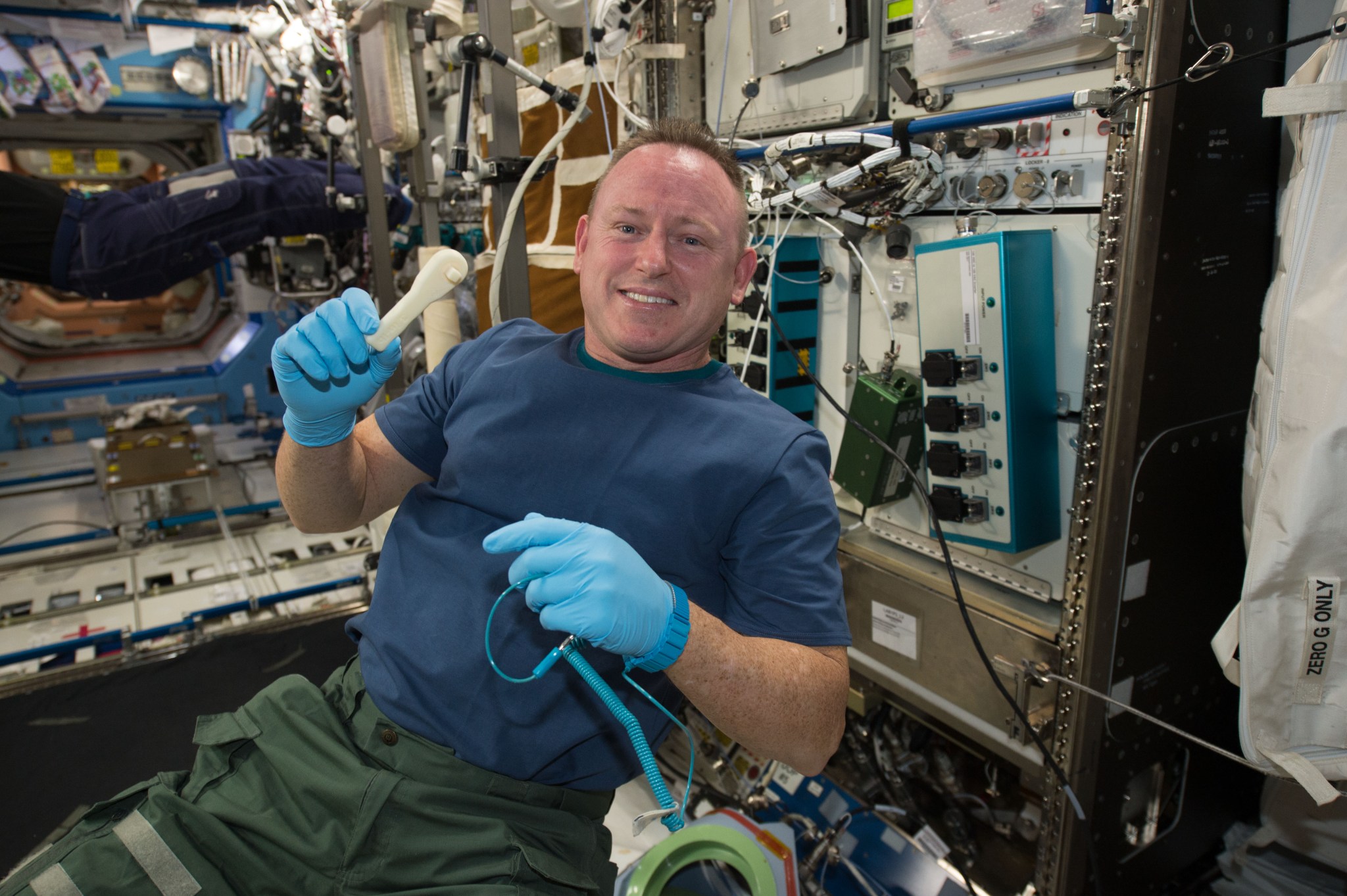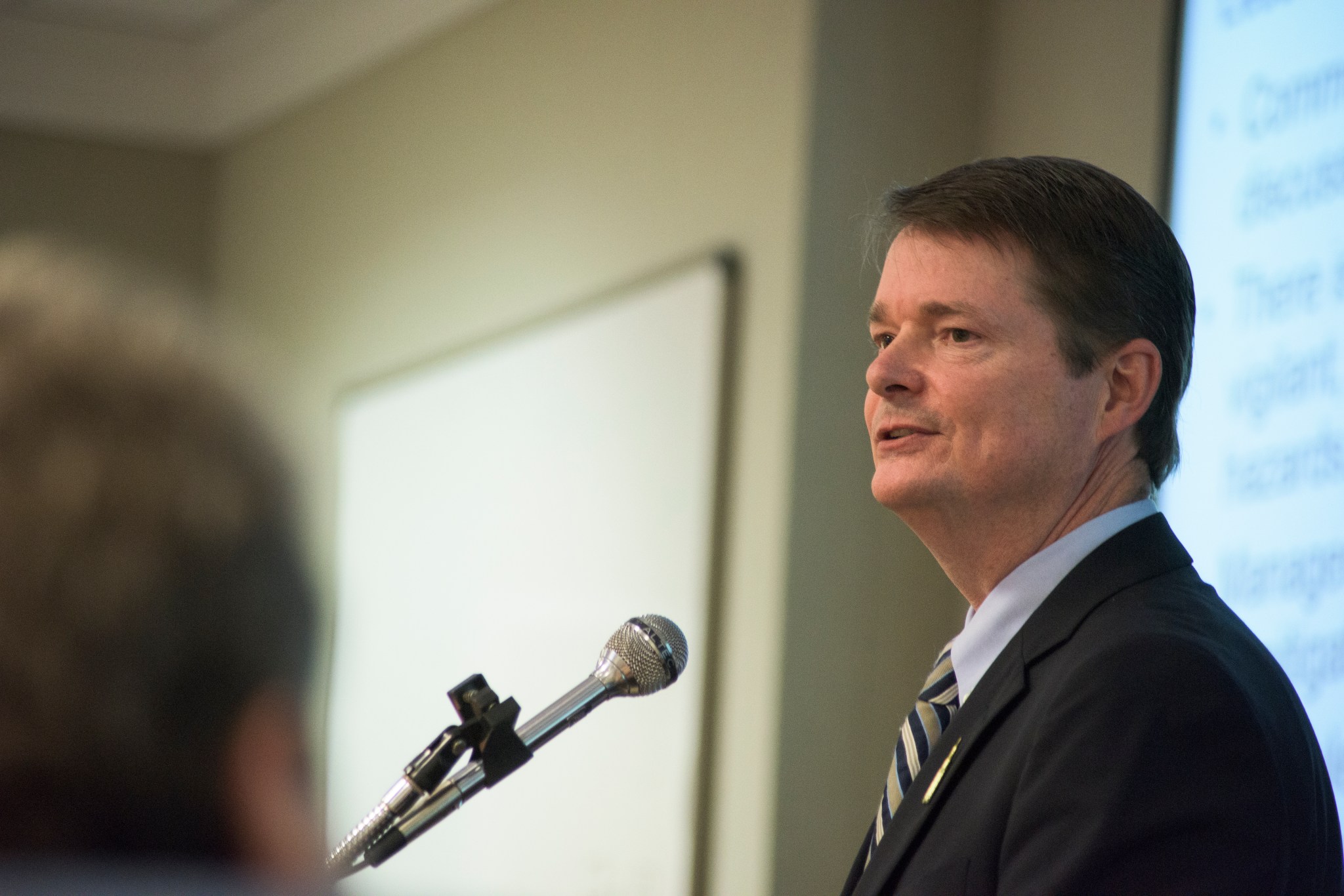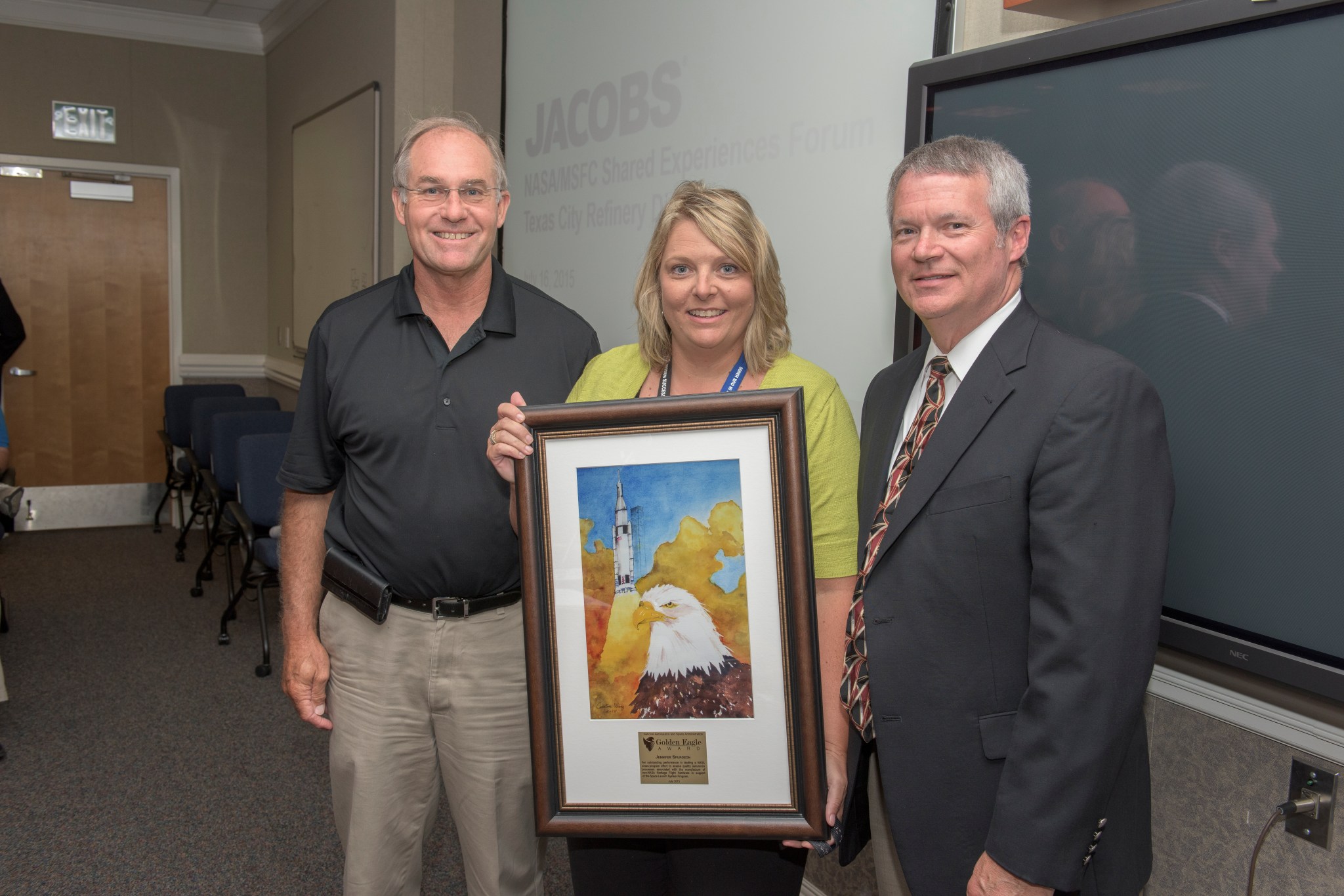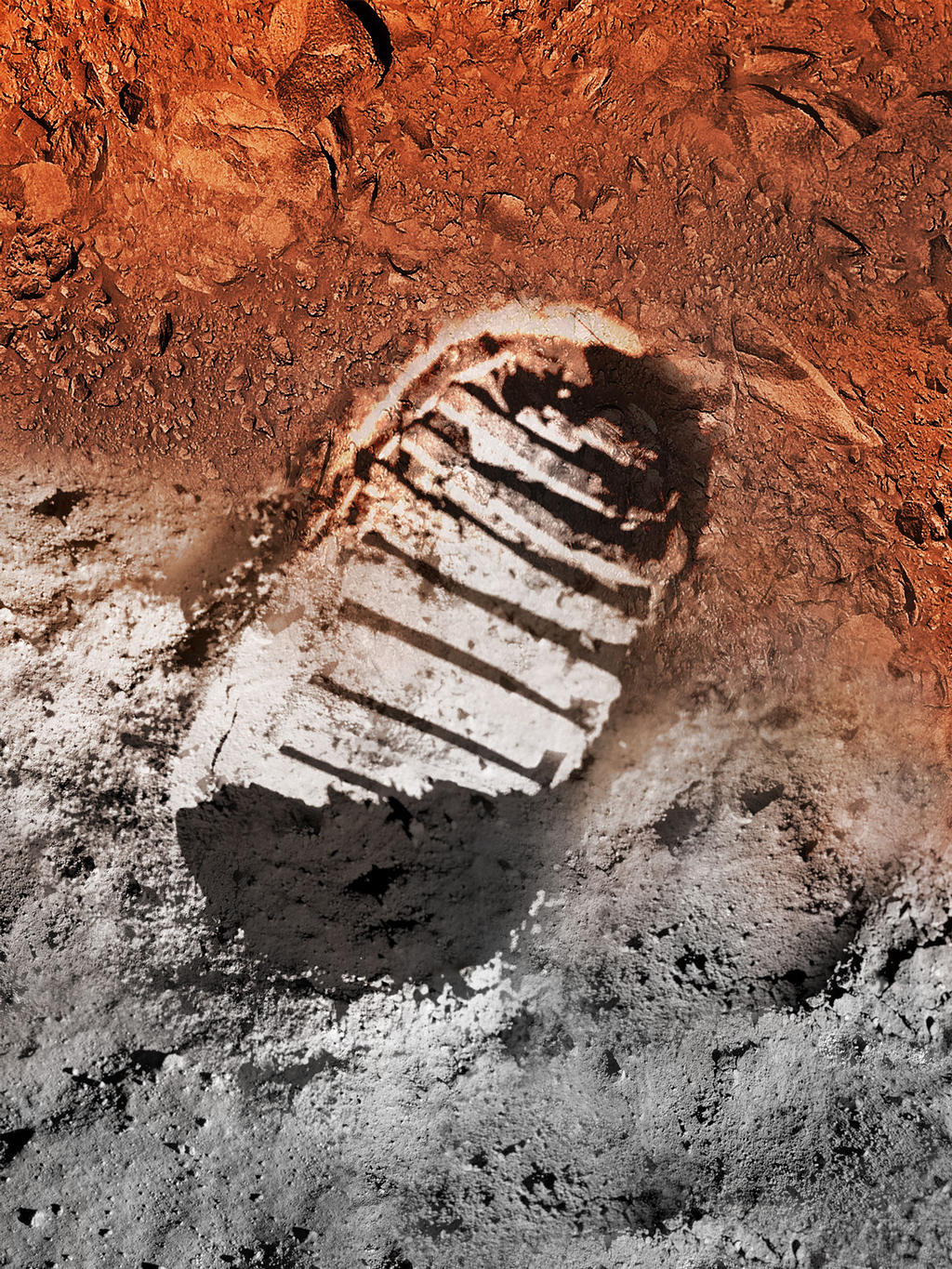In This Week’s Star
- Pedal to the Metal – RS-25 Engine Revs Up Again
- Astronaut TJ Creamer Leaves ‘Astro-POD’ Mark at NASA’s Payload Operations Integration Center
- July 27 Proclaimed ‘Dr. William Emrich Day’ by Huntsville Mayor
- Space Station Astronaut Butch Wilmore to Visit Marshall July 27
- Jacobs Group VP Leads Interactive Lessons-Learned Discussion at Marshall
- Simulating NASA’s Next Footprint
- NASA’s New Horizons Flyby of Pluto Featured On ‘This Week @NASA
Pedal to the Metal – RS-25 Engine Revs Up Again
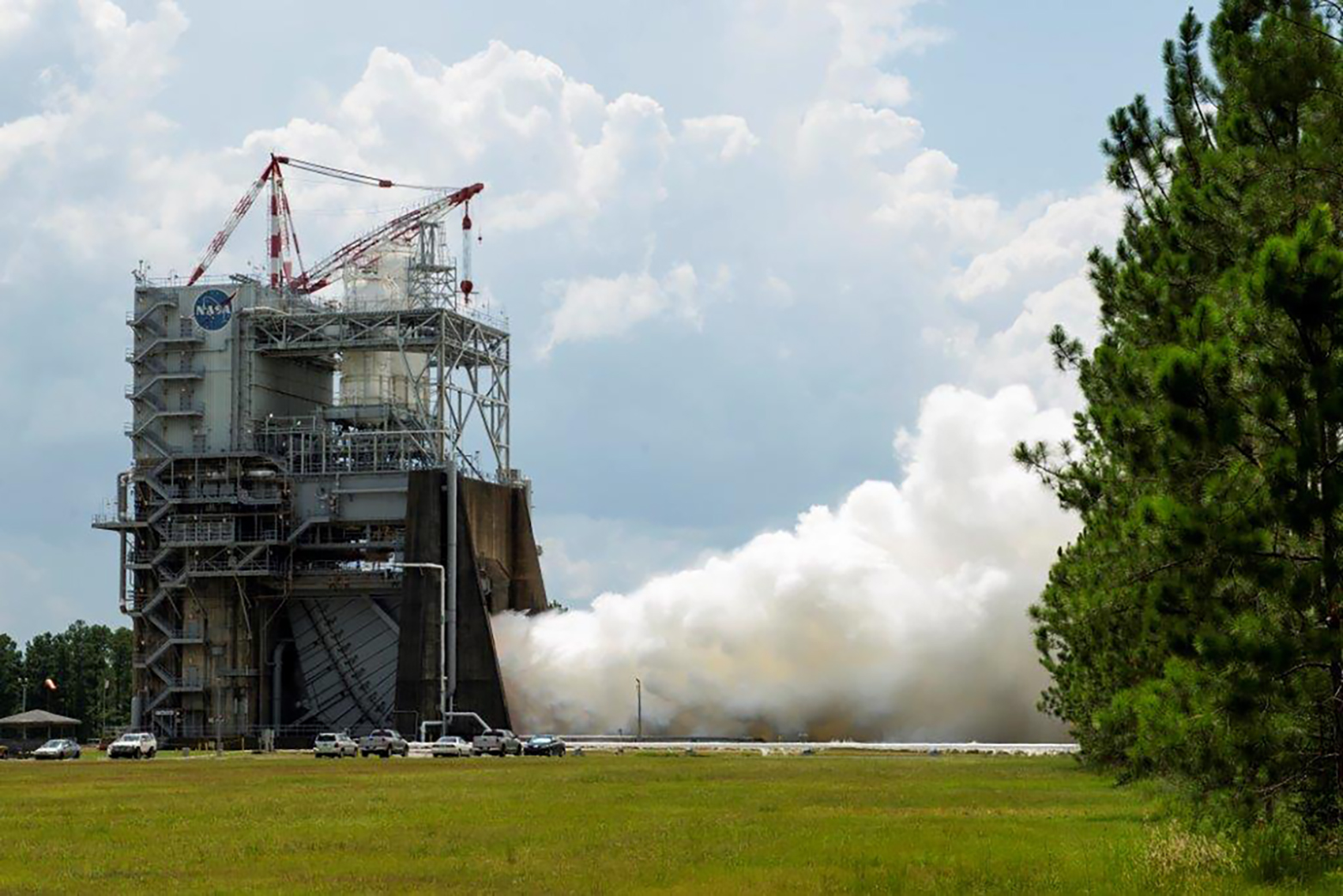
Astronaut TJ Creamer Leaves ‘Astro-POD’ Mark at NASA’s Payload Operations Integration Center
By Lori Meggs
It only took one smell of flavored coffee percolating down the hallway of the Payload Operations Integration Center at NASA’s Marshall Space Flight Center, and you knew astronaut TJ Creamer was in town.
But on most days he didn’t don the blue astronaut suit, but a nice, button-down shirt with a patch — not of his mission to the International Space Station — but rather a payload operations director patch. Sort of a role reversal, if you will. As an astronaut living on the space station, he relied on the payload team in Huntsville — which plans and coordinates all science activities on the station — to guide him through 161 days of research experiments. Now, crew members and ground teams relied on him.
From Dec. 20, 2009, to June 1, 2010, Creamer traveled 65,200,000 miles around the planet as part of Expeditions 22 and 23 onboard the station. For the past three-and-a-half years, he’s been traveling a shorter distance between Huntsville and his home base at NASA’s Johnson Space Center.
In April 2012, Creamer became the first astronaut to certify as a payload operations director, or POD, so he soon became fondly known as the Astro-POD.
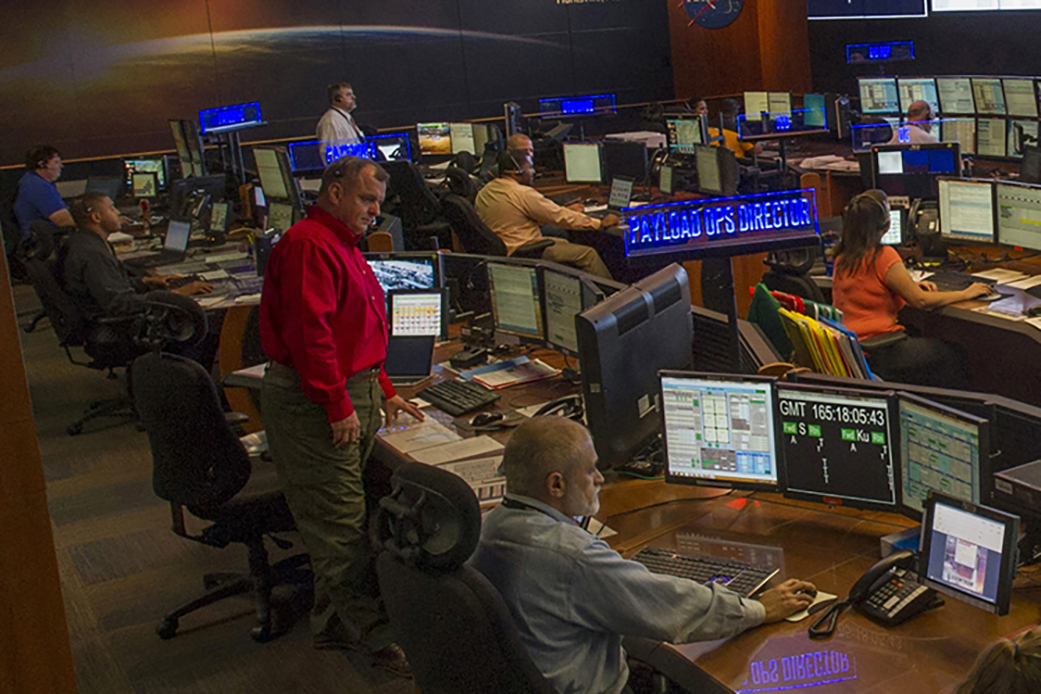
“Folks were excited, yet at the same time a bit intimidated to learn TJ was coming to Marshall,” said Sam Digesu, branch chief for the payload operations directors. But when he arrived, his personality, leadership style, desire to learn, and ability to teach, mentor and be a team player was a hit among everyone. Not to mention his impressive bowling skills.”
But after helping station crews accomplish hundreds of research activities, spanning 14 expeditions, Creamer is transitioning to a new position back at Johnson with the Orion Program. Orion will carry crews when it is launched atop NASA’s new rocket, the Space Launch System.
“TJ has left a lasting imprint with the Marshall team,” said Lewis Wooten, director of the Mission Operations Laboratory at Marshall. “TJ is a true testament of why we are all here and why we do this job. His commitment and advocacy for the research is unmatched.”
Creamer took his position seriously, but he didn’t just come to Huntsville and report for his shift and return to his hotel each day. Rather, he was often out in the community speaking to Boys and Girls Clubs, civic groups, schools and the public — always spreading the word of the importance of the space station to life here on Earth. He even surprised people taking the U.S. Space & Rocket Center tours of Marshall that are offered to the general public. At the Payload Operations Integration Center stop, folks are given a look “inside” through a glass-windowed viewing area. If he could make time, Creamer left his workstation and went into the viewing room to share some first-hand space stories with delighted, lucky visitors.
“I don’t think the guy was ever ‘off-duty,’” added Lamar Stacy, deputy branch chief for the payload operations directors. “He would be transmitting thoughts and comments via email or text at all hours of the day, regardless of where he was. He is relentless in his pursuit of improvement.”
His unique perspective of having “been there, done that” in space helped to improve processes for the ground team.
“Working with TJ has been has one of the highlights of my career,” said Mark Roberts, a data management coordinator in the payload operations center. “I mean, how many people can say, ‘I work with an astronaut?’”
It was the same feeling throughout the payload operations team. When asked to describe Creamer in just three words, none could. They used words like friendly, driven, leader, savvy, charming, fearless, humorous, conscientious… and probably the most repeated — “advocate.”
“It always brought a smile to my face to see him walk into the control room, ready to work on my shift,” added Cat Gibson, a data management coordinator. You knew it was going to be a good shift! We’re all going to miss that. He’ll always be our Astro-POD.”
Click here to watch a recent interview with Creamer about his time at Marshall and what he’ll miss most.
Meggs, an ASRC Federal/Analytical Services employee, supports the Office of Strategic Analysis & Communications.
July 27 Proclaimed ‘Dr. William Emrich Day’ by Huntsville Mayor
July 27 has been declared “Dr. William Emrich Day” by Huntsville Mayor Tommy Battle to honor the NASA Marshall Space Flight Center engineer’s upcoming receipt of the American Institute of Aeronautics and Astronautics 2015 Engineer of the Year award.
Emrich will receive the national honor for his work as the project manager for the megawatt-class Nuclear Thermal Rocket Element Environment Simulator at the AIAA Propulsion and Energy Forum and Exposition July 27-29 in Orlando, Florida.
The award brings honor and attention to Emrich as well as to NASA’s work at Marshall and to Huntsville, said Battle, presenting the mayoral proclamation July 22 at Huntsville City Hall. He also noted that Huntsville has the highest concentration of engineers in the nation.
“It’s certainly well known that the work led by Emrich at Marshall may significantly cut down the travel time to Mars,” said Battle. “Emrich’s research in nuclear fuels may even enable people to travel to distant worlds unreachable with today’s chemical rocket engines. No surprise to us that this groundbreaking research is happening in the Rocket City.”
The AIAA Engineer of the Year award is presented to a member of AIAA who, as a practicing engineer, has made a recent, individual contribution in the application of scientific and mathematical principles leading to a significant technical accomplishment.
“NASA is proud of Emrich’s accomplishments and this award is a testament to his level of professionalism and expertise,” said Tom Williams, director of Marshall’s Propulsion Systems Department. “Huntsville engineers like Emrich are advancing technologies that are critical to our journey to Mars.”
Nuclear thermal rockets are one technology being tested that may be applicable for vehicles traveling to Mars and other destinations in the solar system. These engines have the potential to provide high thrust at efficiencies at least twice that of today’s best chemical engines.
NTREES allows engineers and researchers to perform realistic, non-nuclear testing of prototypical nuclear rocket fuel elements by creating an environment that simultaneously reproduces the power, flow and temperature conditions that the fuel element would be expected to encounter during actual nuclear engine operation.
While radiation effects cannot be reproduced by NTREES, it is expected these effects will be relatively less important than the thermochemical effects resulting from the high temperatures and chemically corrosive propellant flows.
Emrich is also a part-time fission propulsion lecturer at the University of Alabama in Huntsville where he is literally writing the book on nuclear rocket propulsion. “I taught the first course in 2006,” he said. “I quickly realized that there was no textbook on the subject, so I wrote one, which is now in the process of being published.”
“One reason I enjoy teaching at UAH is because it is one of the best ways I can influence the next generation of engineers and explorers who will make contributions to the field of nuclear engineering,” said Emrich.
Space Station Astronaut Butch Wilmore to Visit Marshall July 27
NASA astronaut Butch Wilmore, who lived and worked nearly six months and served as the Expedition 42 commander on the International Space Station, will visit NASA’s Marshall Space Flight Center July 27. Wilmore will share highlights from his 167-day mission in space — from Sept. 25, 2014, through March 12, 2015 — as part of the Expedition 41 and 42 crews.
During his stay on the station, the Tennessee native performed three spacewalks to prepare for new international docking adapters and future U.S. commercial crew spacecraft. He participated in numerous scientific investigations and technology demonstrations, including manufacturing the first parts ever made in space with a 3-D printer managed by Marshall. The parts are now at Marshall for testing.
Wilmore will address the Marshall workforce in Morris Auditorium in Building 4200 at 10 a.m. He will present mission highlights and accept questions from the audience before signing autographs at 11 a.m.
Jacobs Group VP Leads Interactive Lessons-Learned Discussion at Marshall
By Molly Porter
Robert Norfleet, group vice president for Jacobs Technology, spoke to team members at NASA’s Marshall Space Flight Center during a Shared Experiences discussion forum July 16 about lessons learned from a 2005 refinery explosion in Texas City, Texas.
Team members in attendance were reminded of the vital role each individual plays in safety and mission success.
“The human magnitude of this event sent waves through the company and pulled at the fabric of who we are,” said Norfleet. “There’s no question this was a disaster. And for us it was a culture-changing one.”
Norfleet, who led Jacobs’ accident investigation of the explosion that killed 15 workers and injured more than 170 others, described the investigation findings and explained how the disaster led the company to embrace new business practices with a safety mindset.
“We need to always remember to do the sort of things that are obvious in hindsight and make a commitment to each other to do that,” he said.
When asked about Jacobs’ culture of caring and how to know when that work is finished, Norfleet responded, “Culture is something you have to work on every single day. We’re not finished. I think what we learned is we’ll never be finished.”
The Shared Experiences forum is a bi-monthly series of discussions led by trusted practitioners on topics related to mission success and flight safety. The next Shared Experiences discussion, featuring Boeing Space Launch System Vice President John Shannon, is scheduled for Sept. 17.
Golden Eagle Award
During the program, Jennifer Spurgeon, a quality assurance engineer at Marshall, was named the recipient of the first Golden Eagle Award. Spurgeon was recognized for her outstanding leadership in quality assurance activities for NASA’s Space Launch System Program.
All Marshall team members are eligible for the Golden Eagle Award, which recognizes individual and team contributions to safety and mission assurance. To nominate someone for consideration by the award panel, team members are invited to fill out the online nomination form.
Mission Success Is in Our Hands
Shared Experiences and the Golden Eagle Award are part of a broader initiative underway at Marshall to strengthen team members’ commitment to mission assurance and flight safety. Led by the Safety & Mission Assurance Directorate, the “Mission Success Is in Our Hands” campaign is a series of programs and activities that promote awareness and appreciation for the connections between employees’ everyday work, the success of NASA and Marshall missions and the safety of our astronauts.
For more information about the Mission Success Is in Our Hands campaign, click here.
Simulating NASA’s Next Footprint
By Zac Cameron
When NASA astronauts step foot on Mars for the first time, exactly what will they be stepping on? This question has garnered interest from scientists at NASA’s Marshall Space Flight Center.
Doug Rickman of Marshall’s Science Research Office addressed the subject July 9 as part of an on-going series of forums presented by the Innovation and Technology Information Exchange. His presentation, “Engineering Simulants,” discussed regolith — the dust, soil, broken rock and other materials present on every solid body in space.
Creating an accurate regolith simulant will become very important as NASA’s Space Launch System sends humans to an asteroid and ultimately to Mars.
This isn’t the first time NASA scientists have addressed this issue. Similar discussions took place before the Apollo missions landed on the moon. Unfamiliar with the lunar surface, scientists were concerned that the weight of the lunar lander could cause it to sink into the moon’s surface.
The Surveyor program, robotic scientific missions designed to test the moon’s regolith and find ways to safely land on the moon, calmed those concerns and prepared the Apollo missions for further exploration of the moon.
Without an existing simulant to design a proper core drill, Apollo missions 11-14 failed to successfully retrieve a complete core sample of the regolith. NASA persevered, and with the knowledge gained from the partial samples, Apollo 15 successfully returned a sample for study on Earth.
Even with Apollo 15’s success, there was a limited amount of regolith to study. Prior to the retrieval, NASA had used various simulants for the lunar dust of varying complexity and accuracy with no real unifying system to identify their usefulness. Without an atmosphere to protect it, the lunar regolith is bombarded with meteoroids and micrometeoroids, or solar charged particles, which cause the lunar regolith to be an unpredictable mix of various sized and shaped particles.
In 1994, scientists at NASA’s Johnson Space Center developed JSC-1, a lunar regolith simulant based on the Apollo recovered samples. JSC-1 was used as the primary simulant until 2005 when Marshall hosted the Lunar Regolith Simulant Materials Workshop to discuss the next phase in regolith simulants. The workshop helped lead to the production of JSC-1A, which served as the primary simulant following the conference.
Now, Rickman and his colleagues are preparing their newest lunar simulant, NU-LHT-2M, for testing. “NU-LHT-2M is arguably the most complex simulant ever made,” said Rickman.
The new simulant and research conducted in its creation will pave the way for designing more accurate, useful simulants not only for the moon, but for asteroids, Mars and beyond. In addition to NU-LHT-2M, Rickman and his team are also researching fragments of the Tagish Lake meteorite that fell to Earth in 2000 for insight into an asteroid’s potential regolith and examining data returned by the Curiosity Rover from Mars to understand more about the Martian surface.
From the moon, to asteroids and on to Mars, NASA is working to understand what astronauts will be stepping onto when we make our next giant leap.
Cameron, a NASA intern, is supporting the Office of Strategic Analysis & Communications this summer.
NASA’s New Horizons Flyby of Pluto Featured On ‘This Week @NASA’
The July 14 Pluto flyby of the New Horizons spacecraft was featured in the latest edition of “This Week @NASA,” a weekly video program broadcast nationwide on NASA-TV and posted online.
Launched in 2006 and having completed a 3 billion mile, decade-long journey, the spacecraft became the first to visit the dwarf planet – passing it 7,750 miles above the surface at more than 30,000 miles per hour.
NASA Administrator Charles Bolden summarized the historical event saying, “Today’s mission was just one more step on the journey of getting humans to Mars, because it gives us one more piece of the puzzle about our solar system.”
The amount of data released, and still being collected, contains so much imagery and detailed information about Pluto and its moons that the science team anticipates it will take about 16 months for it all to transmit back to Earth. The New Horizons spacecraft is part of NASA’s New Frontiers program and is managed by NASA’s Marshall Space Flight Center.
View this and previous episodes at “This Week @NASA” or at https://www.youtube.com/user/NASAtelevision.



























